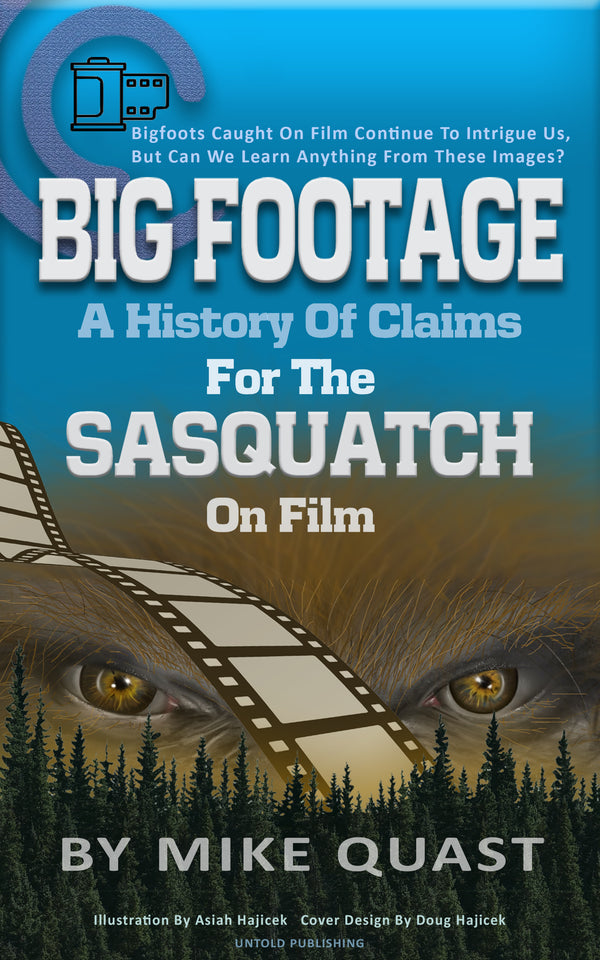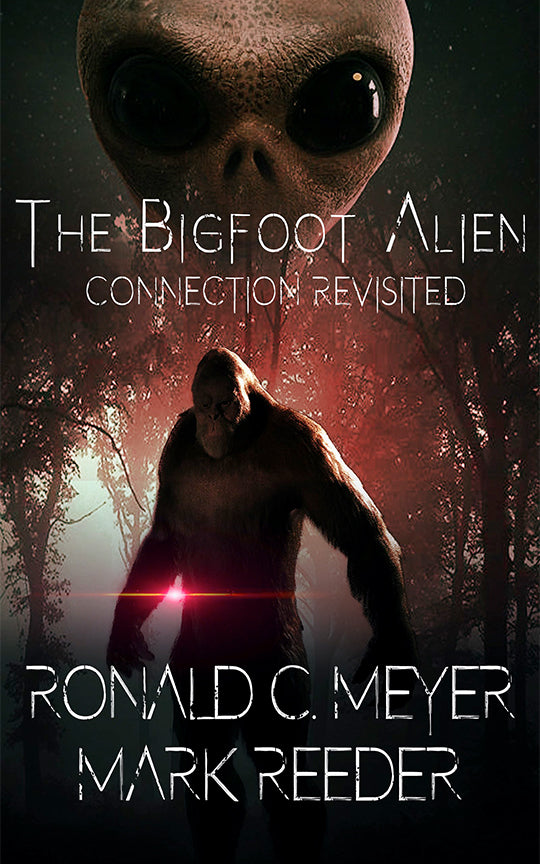District of Columbia Bigfoot Sightings You Need to Know About

By Dr. Elizabeth Harper, Cryptozoologist
In the heart of our nation's capital, amidst the towering monuments and bustling streets, lies a surprising and often overlooked facet of Washington, D.C.'s rich history: the enduring presence of Bigfoot legends. As a seasoned biologist and cryptozoology enthusiast, I have long been fascinated by the persistence of these tales in such an unlikely setting. Despite its metropolitan landscape, the D.C. area has been home to a captivating array of Bigfoot sightings and lore that has enthralled residents for generations.
Over the course of my research, I have delved deep into the historical accounts, eyewitness testimonies, and cultural impact of these elusive creatures in the region. What I have discovered is a tapestry of intrigue, mystery, and a steadfast belief in the existence of something extraordinary lurking just beyond the city limits. Join me as we embark on a journey to uncover the hidden world of Bigfoot in the shadow of the Capitol, and explore the enduring allure of this legendary creature in the most unlikely of places.
Early Bigfoot Encounters in the D.C. Region
The roots of the Bigfoot legend in the Washington, D.C. area can be traced back to the mid-20th century, with one of the earliest known encounters occurring in 1957. It was during this year that a group of teenagers claimed to have spotted a large, hairy, bipedal creature near the Patuxent River in Prince George's County, Maryland, just a stone's throw from the District. The teens described the creature as standing approximately 7 feet tall and covered in dark fur, a description that would become a recurring theme in future sightings.
This early encounter, while lacking in physical evidence, served as a catalyst for the growing interest in Bigfoot within the region. It planted the seed of curiosity and wonder in the minds of locals, setting the stage for a series of sightings that would continue to captivate the public imagination for decades to come. As word of the teenagers' experience spread, it became clear that the D.C. area was not immune to the allure of the mysterious creature, and that the Bigfoot legend had found a new home in the heart of the nation's capital.
The 1970s: A Decade of Increased Bigfoot Activity
As the 1970s dawned, the Washington, D.C. region experienced a surge in reported Bigfoot activity, with two particularly notable encounters occurring in the neighboring states of Virginia.
- In 1973, a woman in Fairfax County, Virginia claimed to have seen an 8-foot tall, dark-furred, ape-like creature with glowing red eyes in her backyard. Police investigated but found no evidence.
- In 1978, a group in Prince William County, Virginia reported seeing a 7-foot tall, hairy creature with long arms and an ape-like face crossing the road in front of their vehicle. No physical evidence was found to corroborate their story.
These sightings, while still lacking in tangible proof, further fueled the growing interest in Bigfoot within the D.C. area. The consistency in the descriptions provided by witnesses, particularly regarding the creatures' imposing stature and ape-like features, lent credence to the idea that there may indeed be something more to these encounters than mere misidentification or hoaxes. As the decade drew to a close, it became increasingly apparent that the Bigfoot legend had taken root in the region, and that the search for answers would continue to captivate the minds of researchers and enthusiasts alike.
Continued Sightings in the 1980s and 1990s
As the years pressed on, the Washington, D.C. area continued to be a hotbed of Bigfoot activity, with sightings reported throughout the 1980s and 1990s.
- In 1986, a hiker in Loudoun County, Virginia claimed to have encountered an 8-foot tall, shaggy-furred creature emitting a strong, unpleasant odor. The hiker was so shaken that he reportedly never returned to the area.
- In 1994, a group in Fairfax County, Virginia reported seeing a 7-foot tall, long-armed, ape-faced creature crossing the road in front of their car in a suburban setting, challenging the notion that Bigfoot sightings are confined to remote wilderness areas.
These continued sightings throughout the 1980s and 1990s serve as a testament to the enduring presence of the Bigfoot legend in the Washington, D.C. region. The consistency in the descriptions provided by witnesses, despite the passage of time and the varying locations of the encounters, suggests that there may be more to these sightings than mere misidentification or hoaxes. As the 20th century drew to a close, it became clear that the search for Bigfoot in the nation's capital was far from over, and that the mystery surrounding this elusive creature would continue to captivate the minds of researchers and enthusiasts for years to come.
Bigfoot Sightings Within the District of Columbia
While the majority of Bigfoot encounters in the Washington, D.C. area have occurred in the surrounding states of Maryland and Virginia, the District itself has not been entirely devoid of sightings. One of the most notable encounters within the city limits took place in 2008, near Prince William Forest Park, which straddles the border between Virginia and the District.
A man who was metal detecting in a forested area of the park claimed to have seen a large, bipedal creature that he believed to be a Bigfoot. He described the being as standing approximately 7 feet tall, with dark fur and a muscular build. This sighting is particularly intriguing due to its proximity to the heart of the nation's capital, and serves as a reminder that the Bigfoot legend is not confined to remote, rural areas.
Despite the relative rarity of sightings within the District of Columbia itself, the 2008 encounter near Prince William Forest Park serves as a testament to the pervasive nature of the Bigfoot legend in the region. It demonstrates that even in the most urban of settings, the allure of this mysterious creature continues to capture the imagination of those who encounter it, and that the search for answers knows no boundaries.
Recent Sightings and Investigations
In recent years, the Washington, D.C. area has continued to be a focal point for Bigfoot activity, with one of the most notable encounters occurring in 2017. A hiker in the Shenandoah Mountains of Virginia, just west of the D.C. metro area, reported seeing a Bigfoot-like creature while out on the trails. The witness described the being as standing approximately 8 feet tall, with shaggy fur and an ape-like face. So shaken was the hiker by this experience that she immediately reported the sighting to local authorities, underscoring the profound impact these encounters can have on those who witness them.
Despite the compelling nature of this and other recent sightings, the challenge of verifying these encounters remains a significant hurdle for researchers and investigators. The lack of physical evidence, such as clear photographs, video footage, or DNA samples, makes it difficult to conclusively prove the existence of Bigfoot in the region. Additionally, the potential for hoaxes or misidentifications cannot be entirely discounted, as the desire for attention or the misinterpretation of known animals can lead to false reports.
However, the persistence of sightings in the Washington, D.C. area, even in the face of these challenges, speaks to the enduring allure of the Bigfoot legend. The consistency in the descriptions provided by witnesses, and the profound impact these encounters have on those who experience them, suggest that there may indeed be more to the story than mere myth or misidentification. As researchers and enthusiasts continue to investigate these sightings, the search for definitive proof of Bigfoot's existence in the nation's capital remains an ongoing and captivating endeavor.
The Bigfoot Field Researchers Organization (BFRO)
One of the most significant resources for those seeking to uncover the truth behind the Bigfoot legend in the Washington, D.C. area is the Bigfoot Field Researchers Organization (BFRO). This group, dedicated to the study and investigation of Bigfoot sightings across North America, maintains a comprehensive database of reported encounters, including those that have occurred in the D.C. region.
According to the BFRO, there have been a total of 12 reported Bigfoot sightings in the District of Columbia and the surrounding counties of Maryland and Virginia. These sightings are classified based on their perceived credibility, with "Class A" sightings considered the most compelling and well-documented. In the D.C. area, the BFRO has recorded several Class A sightings, including the 2008 encounter near Prince William Forest Park and the 2017 sighting in the Shenandoah Mountains.
One of the most intriguing aspects of the BFRO's data is the apparent clustering of sightings around specific geographic features, such as rivers, forests, and mountain ranges. This pattern aligns with broader trends observed in Bigfoot sightings across North America, where the creatures are often reported in areas with dense vegetation, abundant wildlife, and relatively low human population density. The consistency of these patterns suggests that there may be a biological basis for Bigfoot's preferred habitat, and that the creature's presence in the D.C. area is not entirely anomalous.
As researchers and enthusiasts continue to work with organizations like the BFRO to investigate and document Bigfoot sightings in the Washington, D.C. region, the hope remains that definitive proof of the creature's existence will one day be uncovered. Until then, the BFRO's database serves as a valuable resource for those seeking to understand the scope and nature of the Bigfoot legend in the nation's capital, and a testament to the enduring fascination with this elusive creature.
Bigfoot as a Cultural Icon in the D.C. Region
Beyond the realm of sightings and investigations, the Bigfoot legend has also become deeply ingrained in the cultural fabric of the Washington, D.C. area. This is evident in the various legal and political efforts that have been made to recognize and protect the creature, as well as its presence in popular culture and local folklore.
- In 1969, Skamania County, Washington, which borders the District of Columbia, passed an ordinance making it illegal to kill a Bigfoot within the county's borders. While primarily symbolic, it helped solidify the creature's status as a protected and revered figure in the region.
- In 1991, Whatcom County, Washington, located just across the border from the District of Columbia, declared itself a "Sasquatch Protection and Refuge Area" to raise awareness and discourage potential harm or harassment of Bigfoot.
- In 2022, a local elementary school in Hoquiam, Washington, just across the Potomac River from D.C., submitted a classroom project proposing the establishment of a "Sasquatch Protection and Refuge Area" within the city limits, demonstrating the enduring fascination with Bigfoot among younger generations.
Beyond these legal and political efforts, Bigfoot has also made its mark on the popular culture of the Washington, D.C. area. The Washington Nationals baseball team once had a Bigfoot-themed mascot named "Screech" who would make appearances at games and events, while the Washington Wizards basketball team has featured Bigfoot-inspired merchandise and promotions over the years.
These cultural manifestations of the Bigfoot legend serve to underscore the creature's enduring presence in the hearts and minds of those living in the Washington, D.C. region. They demonstrate that, even in the absence of definitive proof of its existence, Bigfoot has become a beloved and integral part of the area's identity, a symbol of the mystery and wonder that can be found even in the most unlikely of places.
The Enduring Fascination with Bigfoot
Despite the lack of conclusive evidence, the Bigfoot legend continues to captivate the minds of researchers, enthusiasts, and the general public alike, both in the Washington, D.C. area and beyond. The persistence of sightings and reports, even in the face of skepticism and doubt, speaks to the enduring allure of this mysterious creature and the deep-seated human desire to believe in the extraordinary.
In the D.C. region, the ongoing efforts of organizations like the Bigfoot Field Researchers Organization (BFRO) and individual investigators to document and study Bigfoot sightings serve as a testament to the unwavering commitment of those who seek the truth. These individuals, driven by a combination of curiosity, passion, and the thrill of the unknown, continue to scour the forests, mountains, and riverbanks of the area in search of definitive proof of Bigfoot's existence.
At the heart of this enduring fascination lies the tantalizing possibility that, one day, the elusive creature will finally be revealed to the world. The potential for a major scientific discovery, one that would rewrite our understanding of the natural world and our place within it, is a powerful motivator for those who dedicate their lives to the study of Bigfoot. The idea that a large, undocumented primate could have existed under our noses for so long, evading detection and capture, is both humbling and exhilarating, a reminder of the vast mysteries that still remain to be uncovered.
Moreover, the Bigfoot legend serves as a potent symbol of the untamed wilderness that still exists beyond the borders of our cities and towns. In an increasingly urbanized and developed world, the idea of a creature that embodies the raw power and majesty of nature holds a special appeal, a connection to a primal past that many feel has been lost in the modern age. For those living in the Washington, D.C. area, where the pressures of politics and the demands of daily life can often feel all-consuming, the Bigfoot legend offers a glimpse of something wild and untamed, a reminder of the natural world that exists just beyond the city limits.
As the search for Bigfoot continues, both in the D.C. region and across the country, it is clear that the creature's enduring appeal shows no signs of waning. Whether driven by scientific curiosity, a desire for adventure, or a deep-seated longing for the unknown, the fascination with Bigfoot is likely to persist for generations to come, a testament to the enduring power of mystery and the human spirit's unquenchable thirst for discovery.
The Search Continues
In many ways, the Washington, D.C. area serves as a microcosm of the broader Bigfoot phenomenon, a condensed version of the mystery and intrigue that surrounds this elusive creature. From the early sightings of the 1950s to the ongoing investigations of the present day, the region has been a consistent hotbed of Bigfoot activity, drawing the attention of researchers, enthusiasts, and the general public alike.
The persistence of sightings in the area, despite its urban and suburban character, speaks to the pervasive nature of the Bigfoot legend and its ability to capture the imagination of those who encounter it. The consistency in the descriptions provided by witnesses, the profound impact these experiences have on those who live through them, and the enduring fascination with the creature among the local population all suggest that there may indeed be more to the story than mere myth or misidentification.
From Bigfoot to UFOs: Hangar 1 Publishing Has You Covered!
Explore Untold Stories: Venture into the world of UFOs, cryptids, Bigfoot, and beyond. Every story is a journey into the extraordinary.
Immersive Book Technology: Experience real videos, sights, and sounds within our books. Its not just reading; its an adventure.



























